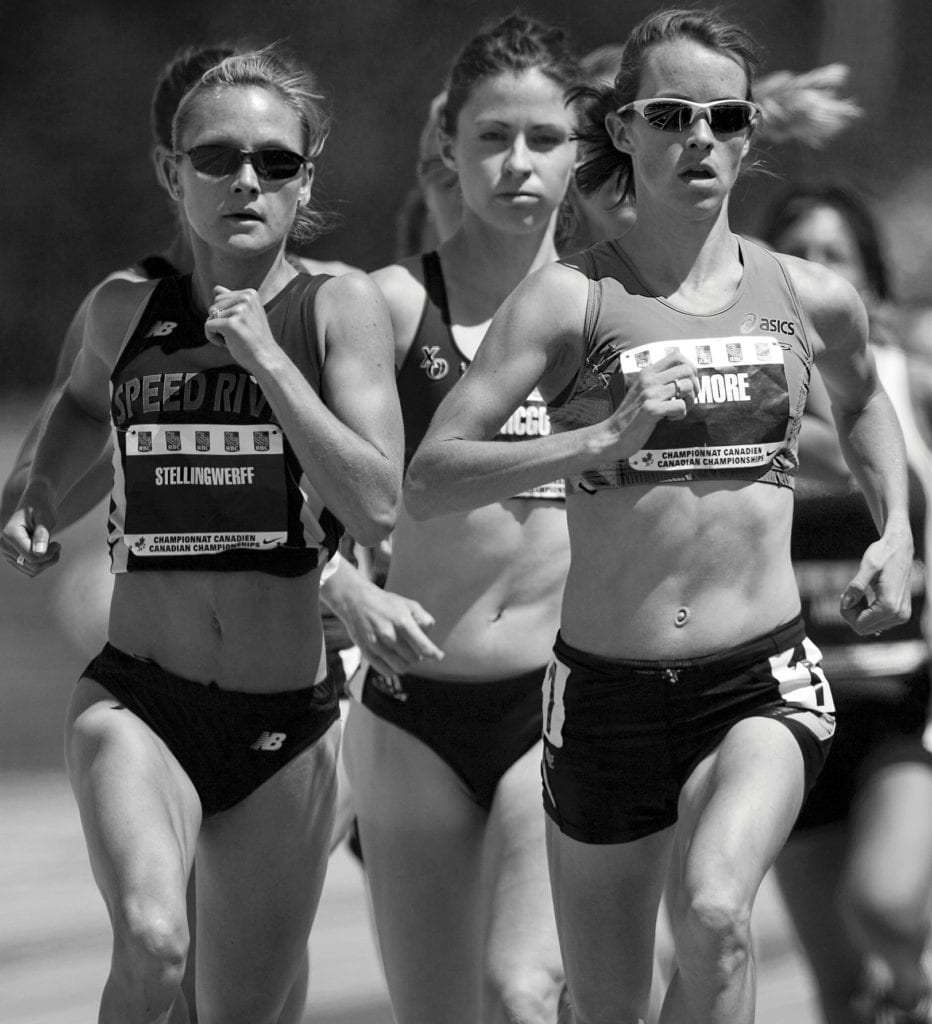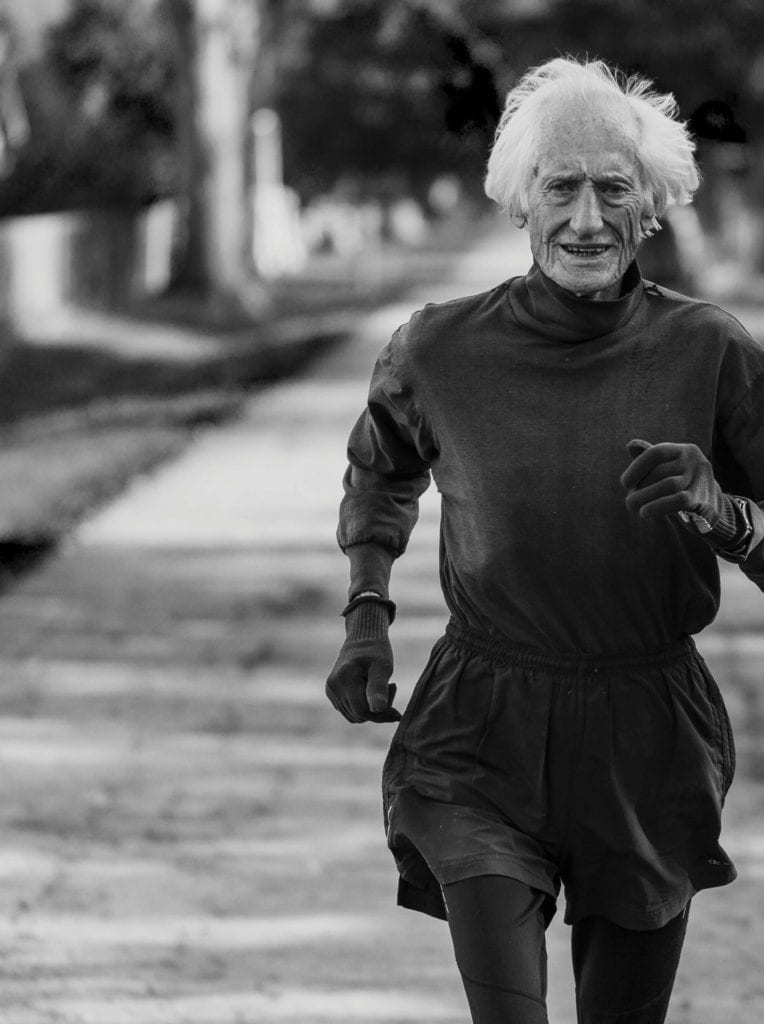The runner’s body: how it changes as we age
Your body will change over time. Here's how to make the most of every decade
 Photo by:
Matt Stetson
Photo by:
Matt Stetson
Let’s call it the Ed Whitlock effect: today’s runners, some inspired by the ageless Canadian wonder who continued to set records well into his 80s, are striving to get faster at older ages. There’s no shortage of inspiration to be found. If Whitlock’s not your taste, how about West Vancouver’s Olga Kotelko? Kotelko didn’t take up track and field until she was 77 – and in the next 18 years she set 34 world records, including 15 after turning 95 (not long before she died, in 2014). When she was examined by McGill University researchers at age 91, Kotelko’s muscle fibres showed less decay than you’d find in most 65-year-olds.
RELATED: Marathon training may reverse heart aging, study shows
Alas, this isn’t an inspirational story about how you can overcome the greatest of challenges with genetics, a little gumption and willpower. The reality is that, for all but the outliers like Whitlock and Kotelko, our bodies will go through a normal aging process, and it will impact our running and training as we get older.
The day will come when you realize that your fastest days are behind you. That’s not a bad thing – running should always be about the enjoyment of movement and exercise. And you can always run longer, set new age-group goals or look for running partners who run for the same reasons you do. The secret is to figure out what your body is capable of and what you can still do.

20s
As an athlete in your 20s, life is great. You’re at almost peak bone mass, and your metabolism is high. As protagonist Quenton Cassidy says in John L. Parker, Jr.’s 1978 novel Once a Runner, “If the furnace is hot enough, anything will burn.”
Equally important are the ligaments and muscles that hold you together. While adults reach peak height between 18 and 20 years old, muscle development continues for a year or more. Untrained women usually achieve peak strength by age 20, while men reach top strength before age 30. As the muscles develop, the central nervous system also maxes out, so the ligaments, tendons and tissues that enable maximum performance are firing on all cylinders. In other words, genetically, you’re really starting your 20s at your peak, and while you’ll be able to offset some of the effects of aging, there are some physical feats from this magical decade that you’ll never be able to replicate.
Malindi Elmore is a great example. When she was 24, Elmore represented Canada in the 1,500m at the Olympics. In 2020, she set the Canadian record in the women’s marathon, and she may well be headed back to the Olympics, 17 years later. But she knows her fastest days occurred in her 20s.
“Mechanically, I can’t run as fast as I used to be able to,” Elmore says. “My body at 40 doesn’t scale up as quickly as it did at 25, when I could really hammer out a 400m pretty quick.”

Malindi Elmore racing the 1,500m at the 2007 Canadian National Track Championships
Photo: Mundo Sports Images
30s
How do we say this nicely? In your 30s, things start to get … harder. First of all, you stop adding mass. Second, your metabolism will also begin to slow. It’s subtle – two to three per cent every 10 years – but it’s enough to start adding fat to your body.
In your 30s, you also start to lose muscle mass (anywhere from three to eight per cent per decade after age 30). The fine physical specimen of your 20s is now getting a little weaker and a little heavier, year by year.
This is about the point that you should really start some serious weight training. Chris Napier, clinical assistant professor in the department of physical therapy at the University of British Columbia and the author of Science of Running: Analyze Your Technique, Prevent Injury, Revolutionize Your Training, says the onset of your master’s years is the time to start picking up very heavy things. “I don’t think a lot of people know – or they don’t want to know – that they should be spending more time in the gym as they get older,” Napier says.
RELATED: Study: consistent training can reduce age-related decline in marathon performance
Napier stresses that even if you’re doing weights, you’re probably doing them wrong. A lot of runner-specific strength routines focus on high reps and repetitive workouts, when you should be striving for lower reps with heavier weights. “Basically what we’re looking at is 80 per cent of your one-rep maximum, so if you’re doing three sets of 15–20 reps, that’s going to be too low-resistance, and you’re getting lots of that high-frequency, low-load activity from running anyway,” he adds. Instead, Napier recommends a low frequency, high-load strategy to provide a different stimulus on your muscles and tendons. Your ideal workout should be three or four sets of six to eight reps; by the eighth rep, you shouldn’t be able to do any more.

40s
In our 40s, we continue to lose lean tissue and accumulate fat, especially around the midsection. You might also notice that you begin, well, shrinking. After your 40th birthday, it’s common to lose a half-inch of height every decade, thanks to changes in your bones, muscles and joints.
The biggest adjustment in your 40s comes from your heart. For men, the risk of heart disease starts to rise in your 40s. Functionally, your maximum heart rate starts to drop, your cardiac output decreases and your VO2 max starts to decrease. It’s no coincidence, then, that the competitions that are seeing higher participation and more PBs from the over-40 crowd involve less extreme exertion and more endurance. Napier says the VO2 max doesn’t matter as much in a half-marathon as it does in a 5k, for example. “That’s probably why we see master’s runners doing better at the longer distances,” he adds. “We don’t generally see the same trends in the middle distances that require hitting maximum heart rate and sustaining that.”
One important change you can make in your 40s to offset deterioration and a loss of fitness is to hire a coach. While coaches are generally thought of as tools for aspirational runners, the physiological impact of a prescribed workout can’t be underrated. “One thing that happens when you’re self-coached is you tend to avoid the hard stuff, so you tend to gravitate to the workouts that feel easy and impact the areas that you don’t necessarily need to work on,” Napier says. “As you get older, you may be steering yourself away from those VO2 max workouts, whereas if you’re being coached, your coach is going to make sure you get that content in.”
The last area of significant change in your 40s comes in perhaps the most important part of the body: your legs. While younger runners may experience more form-related injuries to knees and the IT band, master’s runners are more susceptible to injuries in the Achilles tendons and calves. Simply put, as you age, your training load can overtake your body’s ability to sustain that load, and when that happens, the Achilles becomes highly vulnerable. “The calves and Achilles complex is really the most important area to develop as you get older,” says Napier, “because we start to lose muscle mass there, and that’s really linked to a lot of the mechanical changes we see.”
So if you haven’t already started with your box jumps and calf raises, it’s time to get moving.
50s
According to the 2019 State of Running report published by RunRepeat, the 50s are the decade during which race participation starts to fall off. Physiologically, it’s no surprise, as more significant health challenges begin to arise.
The risk of heart disease for females starts to accumulate in their 50s, and menopause brings a host of other challenges that can impact athletic performance, though many studies – and many women – have found that running can help alleviate symptoms like hot flashes, depression and sleep disturbances. All runners start to lose bone density at this age, leading to a heightened risk of injury, and vertebrae begin to lose mineral content, making the body’s core structure more delicate. The spinal column can become more curved, raising the risk of bone spurs. And if all that weren’t enough, the foot arches begin to drop – making you even shorter and impacting your gait.
But none of this is career-ending. It doesn’t even have to be performance-limiting. It may not even have anything to do with how many miles you’ve put into your legs in the previous decades. The most well-trained runner can break down for no other reason than the luck of the draw. “It may come down more to who wins the genetic lottery, in terms of longevity,” Napier says. “To be able to run successfully into your later years probably comes down a lot to how your body is able to handle the aging process.”

60s
The good news is that almost everything else that’s likely to impact your running life will happen in your 60s.
That’s also the bad news.
Women will start to see weight loss, which is more likely to come from muscle than fat, so the lighter load is offset by an increased strain on the muscles.
General elements of aging, like changes in posture and balance, can increase the risk of injury. Women may still be dealing with the effects of menopause, and their risk of osteoporosis increases, thanks to further loss of bone density.
This is why, as the athletes she coaches move into the second (or third) acts of their athletics careers, Elmore puts a greater emphasis on recovery. “The big thing that I’ve changed for master’s runners versus younger athletes is definitely building more recovery time between sessions,” she says. “We’re getting away from the assumption that you do two or three track sessions and a long run in a seven-day cycle. That’s not going to work when we need more recovery time, our human growth hormone levels are lower and we need time for healing and repair.”

70s
If you’ve made it to your 70s and you’re still running, congratulations – the perils are largely behind you. Men start to catch up to women with respect to bone density loss, and all runners can expect to update their vital statistics more frequently as height loss begins to speed up in your 70s. But if something was going to end your running career, it likely would have done so by now.
And yet, like Whitlock, more runners are having success into their 70s and beyond. If you look at the results from the 2018 Boston Marathon (the year of the rainstorm, no less), 203 runners aged 70 or older finished.
The old adage that a runner has a certain number of miles in their legs has been proven wrong.
“I know it’s cliché, but age really is just a number,” says Napier. “Runners are continuing to push their bodies as they are able to. And going off feel, I think we’re starting to see that we can perform well much later than previously thought.”
This story originally appeared in the March/April 2021 issue of Canadian Running
Andrew McKay is a proud member of the Beaches Runners Club, the Lower East Siders and the Ajax Wannabes. He will be entering a new decade this year, and hopes to be able to test his fitness at in-person races again soon.


